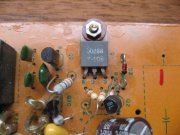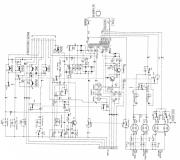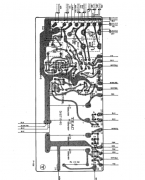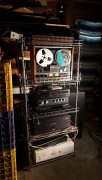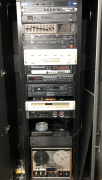62vauxhall
Veteran and General Yakker
- Joined
- May 14, 2014
- Messages
- 2,365
- Location
- Southwest Kootenays BC
- Tagline
- No such things as bad days, just bad moments
What voltage should be present at the Base pad of Q1?
The MJE15032G I recently installed there failed. After multiple 2SD288's failed several years ago because of grounded Collectors, I thought this latest transistor without being shorted was the answer.
As per the service manual, 23 volts was obtained at tab #36 so I thought things were rosy. A couple of days later, when I measured again, there were a few hundred millivolts and the new Q1 was too hot to handle.
I removed the MJE15032G and checked it with a DMM and it's a goner. That made me wonder what voltage it was seeing and I measured 41 volts and it's Base pad. The schematic does not help as I've not seen any voltages printed on it. I thought the most I'd measure was 23/34 volts.
The MJE15032G I recently installed there failed. After multiple 2SD288's failed several years ago because of grounded Collectors, I thought this latest transistor without being shorted was the answer.
As per the service manual, 23 volts was obtained at tab #36 so I thought things were rosy. A couple of days later, when I measured again, there were a few hundred millivolts and the new Q1 was too hot to handle.
I removed the MJE15032G and checked it with a DMM and it's a goner. That made me wonder what voltage it was seeing and I measured 41 volts and it's Base pad. The schematic does not help as I've not seen any voltages printed on it. I thought the most I'd measure was 23/34 volts.

